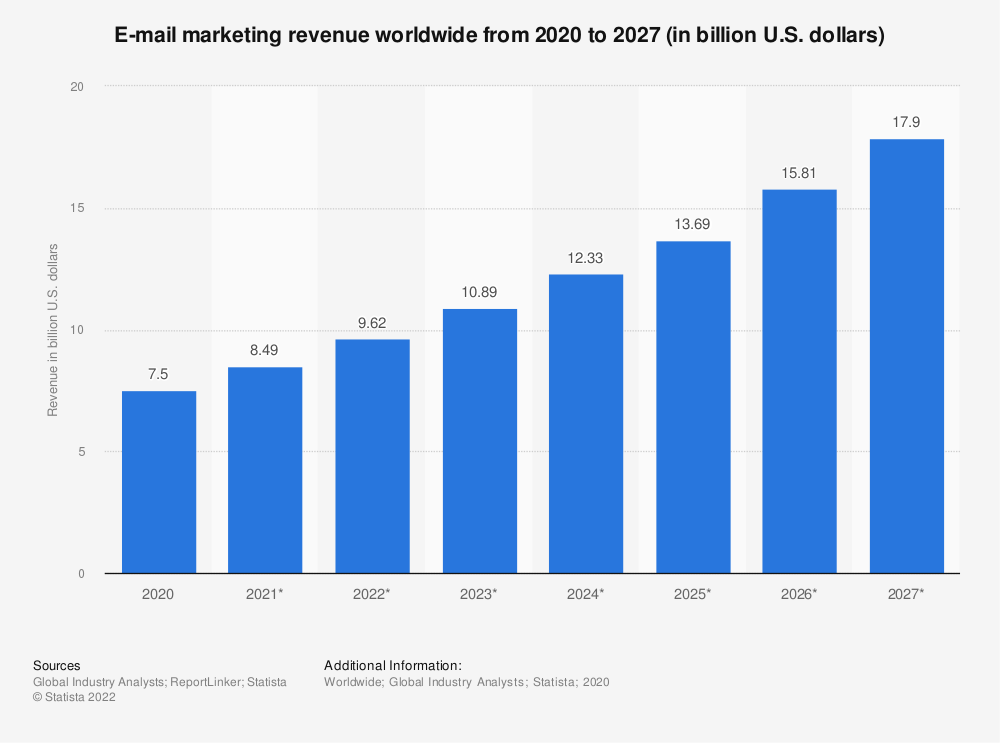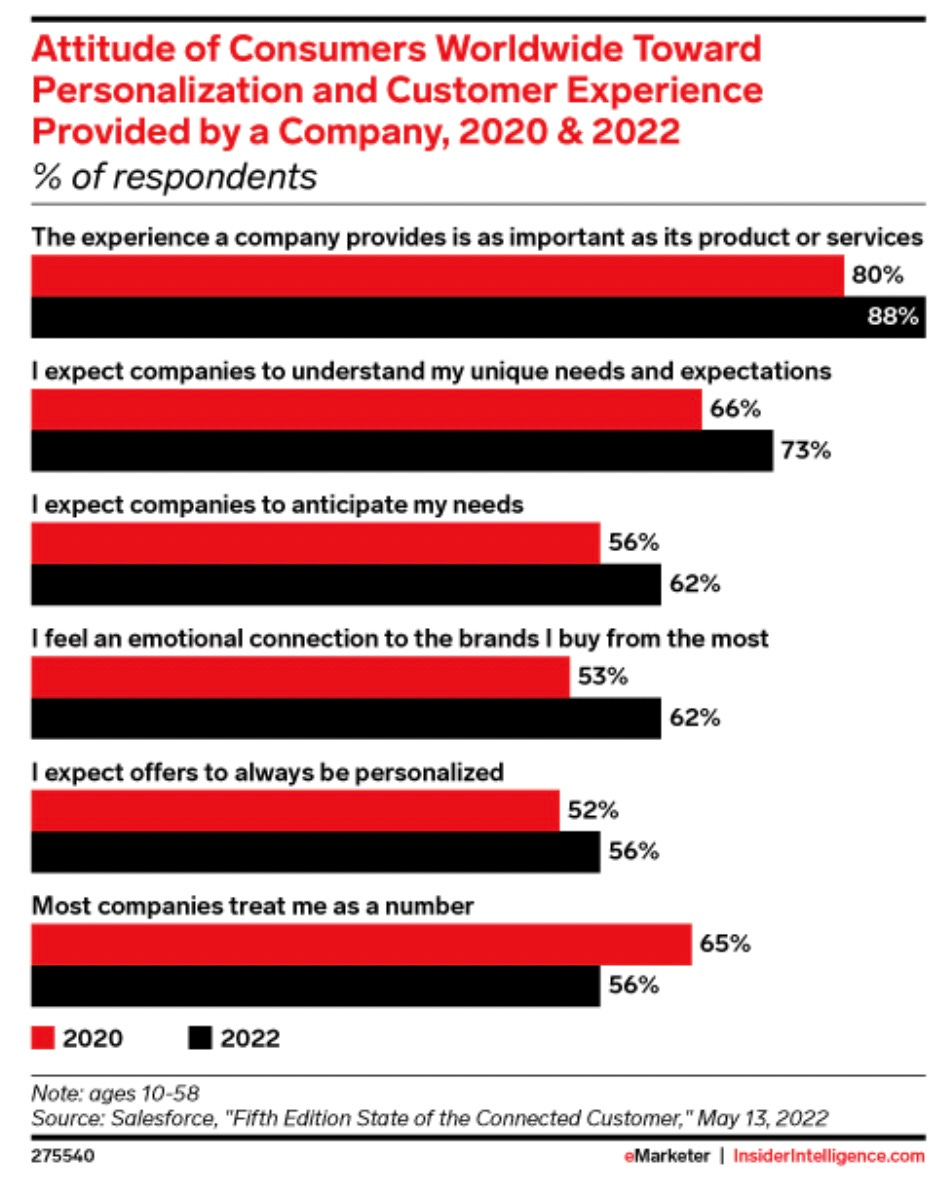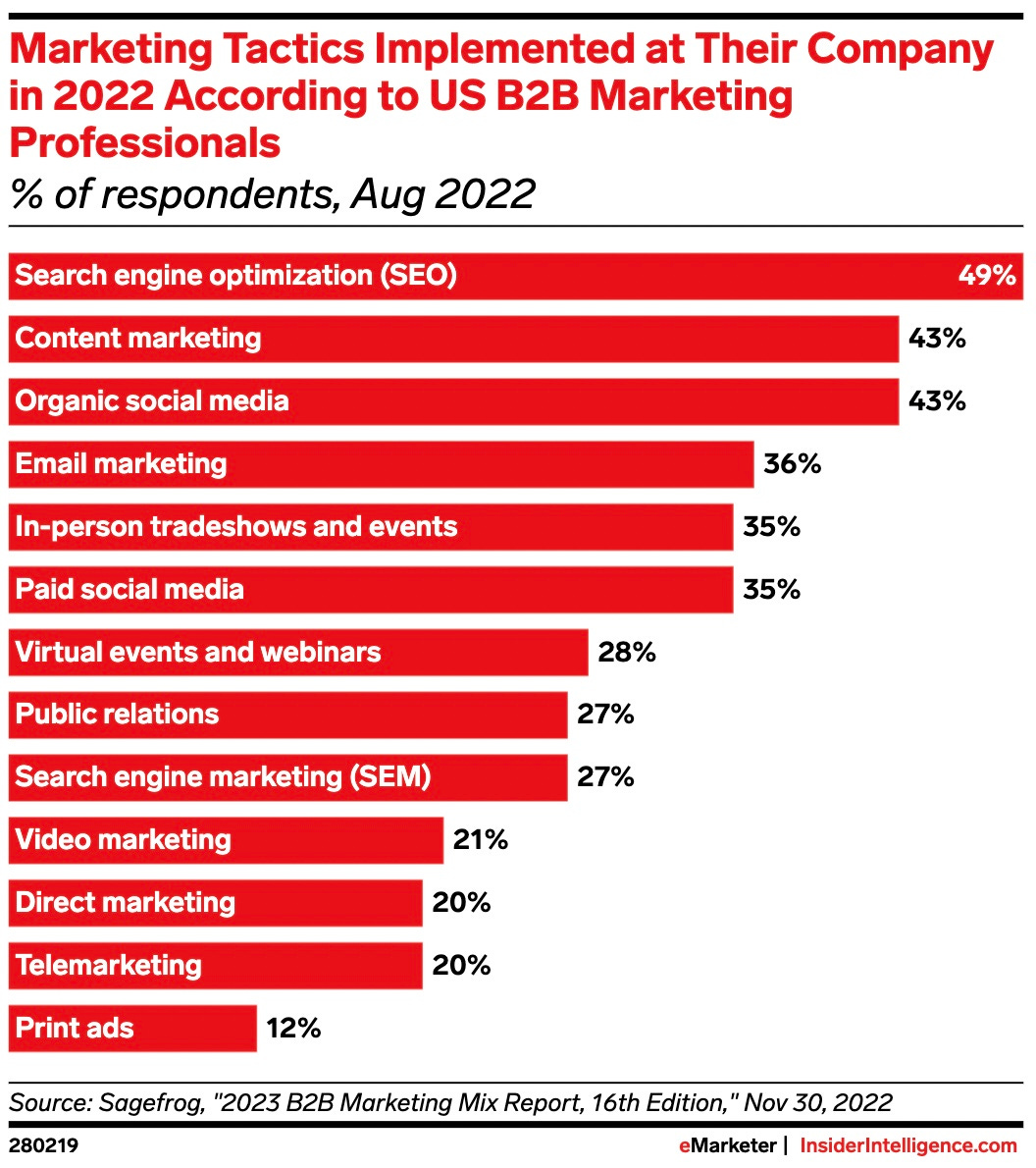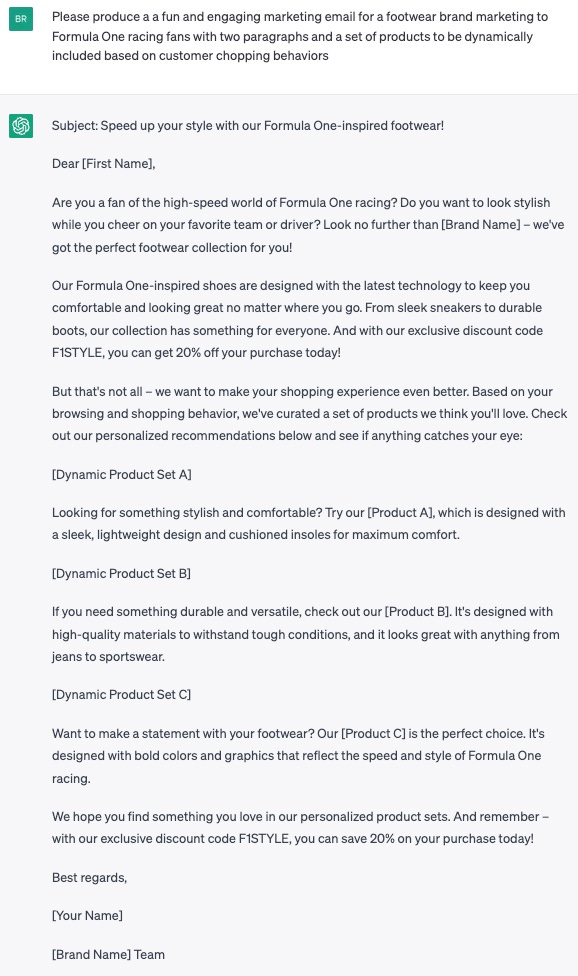Martinez Cocktail & How Generative AI Will Transform Commerce & Marketing (Part 3 - Digital Marketing)
Issue No. 7 - April 14, 2023
In today’s issue, I continue my series on the impact Generative AI will have on digital commerce and marketing. If you missed the first two in the series please see see Part 1 - Personalization & Content - where I paired that with a great Umami Martini - and Part 2- Experiences & Product Discovery - where I paired it with a low-ABV Lazy Giuseppe and explored what the low-ABV movement is all about.
And as for the cocktail this week, in this issue we are making a classic cocktail that in many ways forms one of the pillars of mixology, and led to the creation of the Martini.
This Week’s Cocktail: The Martinez
This week we are going to reach way back to a classic cocktail that forms part of the foundation for mixology with the Martinez cocktail. The Martinez is considered by many as the precursor to the modern martini, and traces its origins back to the mid-to-late 19th century. While the exact origin of the Martinez remains a subject of debate and like much of mixology the history is unclear and debatable - remember, there is drinking involved! One widely held theory attributes its invention to bartender Julio Richelieu who was working in Martinez, California - near San Francisco - around 1860.
The story goes that Richelieu concocted the cocktail for a gold miner passing through and decided to name it after the town. I imagine that the gold miner was probably on their way into San Fran and felt flush with some gold nuggets, pulled up the bar, and provocatively threw a coin on the bar and asked Richelieu to come up with something unique. (Plausible, right?)
Another theory suggests that the drink was created by the legendary bartender Jerry Thomas at the Occidental Hotel in San Francisco during the same period. That too is plausible, as Thomas was a pioneering American bartender and is widely regarded as the father of American mixology. In 1862, Thomas published The Bar-Tender's Guide - also known as How to Mix Drinks or The Bon-Vivant's Companion - which was the first cocktail recipe book published in the United States. Remarkably, you can still find it in print. This seminal work first documented and introduced many classic cocktails, including the Tom Collins, Brandy Daisy, and the original recipe for the Martinez. Thomas was apparently not only a great mixologist, but also quite the showman, known for his signature "Blue Blazer" cocktail - which involves the theatrical presentation of lighting whiskey on fire and passing it between two metal cups to create a dramatic arc of blue flame. Here is a video if you are curious, as the “Blue Blazer” continues to entertain.
Personally I like the Richelieu story, and can imagine Thomas heard about it - maybe even from the same (now drunk) miner - and added it to his repertoire. Regardless, the Martinez rapidly gained popularity and soon became a staple in bars and saloons across the U.S. - and eventually beyond. Earlier this year I was saddled up to one of my favorite spots in Amsterdam - Pulitzer’s Bar - and overheard the bartender recommend one to a guest from Sweden sitting next to me at the bar. She hesitated at first, but I offered a bit of reassurance and she ordered it. She loved it. You will too.
Of course, the Martinez - like many classic cocktails - has undergone an evolution over time. The original Martinez recipe called for Genever or Old Tom gin - each which can be a bit sweet on modern palettes. Many modern Martinez specs use Dry Gin and may bump up the maraschino liqueur for just a touch of sweetness and bitter to balance out the sweet vermouth. Feel free to experiment. And if you have an Benedictine or other liqueur around, the Martinez is a great template upon which to experiment - start with a teaspoon of one of them and see what you think - but report back!
And how did the Martini evolve from the Martinez? (I am happy you asked!) In 1884, O.H. Byron published The Modern Bartender which featured two different versions of the Martinez - one with French (dry) vermouth and the other with Italian (sweet) vermouth. As the cocktail continued to evolve, the modern martini - with dry vermouth - emerged as a distinct and separate entity, while the Martinez maintained its status as a classic, albeit far less widely known or dranken.
Let’s right that wrong! Cheers!
The spec, serves one:
1.5 oz - Old Tom Gin (Hayman’s is a good choice)
1.5 oz -Sweet Vermouth (use a high quality one, such as Carpano Antica or Dolin Vermouth De Chambery Rouge)
.25 oz - Maraschino Liqueur (Luxardo Maraschino preferred)
2 dashes - Angostura bitters (alternatively use other aromatic or ‘house’ bitters)
Orange twist for garnish.
The process:
Add the gin, sweet vermouth, maraschino liqueur, and bitters into a mixing glass with ice and stir until well-chilled. Strain into a chilled coupe glass. Garnish with an orange twist.
Analysis: How Generative AI Will Transform Commerce & Marketing (Part 3 - Digital Marketing)
In part one of this series I explored what Generative AI is and how Generative AI will impact personalization and content in digital commerce and marketing. In part two of this series, I focused on how generative AI will transform commerce experiences and product discovery. This is part three, and today I focus on digital marketing and merchandising. I encourage you to check out the other articles, and let me know what you think in the comments.
Marketers have already latched onto the opportunity around Generative AI
I have attended a number of conferences recently, first Shoptalk a few weeks ago in Vegas, and then this week was Modern Retailer in New Orleans (and yes there may have been a few cocktails consumed at each!). One thing that has struck me from the conversations I have been having is just how quickly the topic of Generative AI - and ChatGPT more specifically - has gone from nichey happy-hour conversation to marketers not only understanding it, but some going all in.
One founder of a mid-market apparel brand went so far as to tell me this week that he has developers working to “automate marketing” by integrating his company’s product catalog with ChatGPT, using creative prompts connected to his email marketing tools and Google Ads. He figures it will save him over half a million dollars a year. My take is he is probably way out ahead, and may be quite disappointed with what his developers create, but the ambition is there. He may just be too early.
Another conversation was with a CMO of a regional U.S. specialty grocery chain. While we were talking about his goals around improving personalization of his chain’s digital experience he flat out asked me if we could help him automate the creation of content using Generative AI. He then told me that unless someone could help him with that, he was not interested in talking about personalization - since that was the biggest impediment to enabling personalization. He is not wrong. He figures the tech community is about a year away from bringing a solution like that to him, and so he figures he will wait. He is probably not wrong about that either.
Let’s explore how marketers stand to benefit from Generative AI in some other ways.
Um, Anyone Have Any New Ideas?
Let’s face it - like many in the modern workforce - digital marketers are exhausted. They are exhausted by modern life just like you and I - our always-on, evolving hyperculture and twenty-four hour newscycle (hopefully I did not trigger anyone with that, have another sip of your Martinez and breathe). The fact these marketers work in digital as well probably only makes those things worse.
They are of course also exhausted by the KPI-driven nature of their work and the constant flow of work needed to keep their business moving down the tracks - the next season, the next campaign, the next problem to solve. And in that context, add the creative pressure to come up with a wide range of new ideas for those campaigns and the content to engage audiences, drive conversion, and build their brands.
The jobs are huge. From campaigns to content. From promotions to cross-selling. From subject lines to email and SMS content. From social media strategy and content to display ads. From search engine optimization to search marketing. From gamification to loyalty strategies. From user-experience to collaborations - with influencers and other brands. The list goes on.
Now imagine trying to come up with fresh and interesting ideas for each of those. And on top of that nearly each of the above require A/B testing and optimization - continuously testing and refining marketing strategies and tactics to improve performance and deliver a great customer experience - and as we already established, content is a huge challenge in personalization and optimization today, both the variations and new ideas to test.
So is it any surprise that a tool like ChatGPT - or the slew of other AI-based creative tools - could be useful to help merchants and marketers? I would go so far as to say that marketers and merchants who are not using these tools today to help brainstorm ideas may not be using all the tools at their disposal. (And yes, there are potential pitfalls and downsides, which I explore later in this article.)
Speaking of ideas, has anyone seen the co-pilot? Um, last I saw them they were in line for Chick-fil-A
We have already seen a proliferation of developer oriented “co-pilot” applications using Generative AI to help developers be more efficient, including ChatGPT itself which can spit out an impressive range of code - including Python, Java, JavaScript, Ruby, PHP, HTML/CSS, SQL, and many others. A developer simply needs to provide clear, concise, and specific prompts that outline the programming language, desired functionality, and any relevant context or constraints - including the purpose, format, and any libraries or frameworks they want to use and - boom, they are off to the races. There is a good chance your developers, integrator, or agency are already using tools like ChatGPT or Github’s Co-Pilot.
There are of course many pitfalls - from quality assurance to intellectual property - but there is also little question that tools like these can lead to a lot of efficiencies with routine tasks and ideas on how to approach more complex challenges. This will no doubt play out for the technically-oriented marketer as well, as they create everything from basic HTML to embedding dynamic tags in emails and content - becoming more efficient and freeing up time for more strategic and creative work.
We are now seeing many marketing and content applications using the same concept to support marketers, graphic designers, and soon merchants to do their jobs. Bloomreach, for example, was one of the first to launch a co-pilot tool to help marketers generate content for emails, SMS, in-app, and push notifications within the marketing tool-set. This is of course just the beginning at Bloomreach, and we will no-doubt see many others follow.
But beyond the generic capabilities of the publicly available Generative AI tools, we will see vertical applications emerge that leverage large language models (LLMs) to provide co-pilot capabilities within guardrails like brand-voice, intellectual property, and perhaps even in support of brand campaign prompts and foundational creative which are fed into the model.
Expect these tools to emerge within a year or certainly two - and to improve rapidly from there. We will see a host of new start-ups and established players alike pile in, and not just for email. One example is Meta recently launching Generative AI ad creation tools - though Meta’s murky history has many advertisers uncomfortable with trusting these tools out of the gate. The key will be access to training data, and the solutions that have access to that - sitting on top of customer data platforms, analytics engines, and perhaps data-warehouses - to excel and outpace those with only generic data sets or data sets containing competitive brands and campaigns, such as Meta’s.
Unlocking the potential for personalization in Marketing
We have been talking about targeted and personalized marketing for decades now, but the sad truth is that most marketing is not either. Email marketing is estimated to generate nearly $11B in revenue in 2023, and will continue to grow to nearly $18B by 2027, yet most consumers feel they are simply treated as a number - and they actually want businesses to personalize and tailor the experience to them. In fact, nearly 45% of consumers say that the communication they receive from a brand feels like a spam message.


As I wrote about in Part 1 in this series, Generative AI has the potential to unlock the potential of personalization by enabling content variations that can be tested and targeted to small segments of customers. In marketing this has already been happening with tools that create and test email subject lines - Phrasee and Persado are two well-known examples -but these tools work today in isolation from the core marketing solutions and do not necessarily personalize, they optimize based on what is working best against segments. Soon we will see emails and other marketing produced in response to very specific customer attributes, behaviors, and segments - with optimization applied from there.
Today, most marketing solutions struggle to perform those types of tasks and are also less than fully automated - requiring professional services to support them, but that too will change over time. (And yes, I would be remiss not to mention that at Bloomreach we have the advantage of an in-memory data and analytics solution which gives us a leg up.)
Generative AI unlocks the potential to tune and test content variations - written and graphical - to drive more relevant marketing communications to customers and optimize it, as well as tune that content to very specific customer signals. This could be as simple as the models and lifestyles used in the photography to the language used in the calls-to-action. For the time being, it will be important for marketers to curate and keep a close eye on this content to ensure it meets their standards, stays on-brand, and minimizes the risks of offending customers. But over time these systems will improve and it will open up the opportunity for automation.
Marketing turns chatty
I wrote about how Generative AI opens up the potential for conversational commerce to quickly change how customers engage earlier in this series, - including totally transforming the guided selling experiences of the past. Digital commerce channels that have seemed dormant or silly - like interactive TV - may also become very compelling leading to a host of innovative conversational experiences we will see across channels.
Generative AI clearly also opens up the possibility for marketing channels to become conversational. While today, ChatGPT and other LLMs today pose significant risks of going off the rails with prompts from users that can turn hateful or worse, expect filters and other guardrails to be in place soon that allow for clean natural language responses. This opens the door for SMS, messaging, and even email to turn conversational.
Imagine a customer responding to a marketing email with a question and getting a near instantaneous response tailored to them? While that could be a nightmare for some whose inbox already strikes them with anxiety, it also turns a deaf channel into a robust communication tool. And of course, it is an easy jump to imagine SMS and other messaging channels becoming conversational. And while there have been attempts to do that in the past, they were largely rules-based and quickly felt clunky to most customers.
Consumers in many parts of Latin America and Asia already expect to chat with merchants over WhatsApp or SMS - even negotiating prices. That is also true in North America and Europe when it comes to resale marketplaces, where a customer might have a conversation with a seller to clarify product details, condition, and even price, payment method and shipping. But that does not scale well.
Generative AI paired with search, business logic, and a model of offers and next best actions could enable both a higher quality experience for the customer, but also enable this type of interaction to scale. It may turn the blunt instruments of email and SMS marketing into deft and nimble engagement tools. It is even possible to imagine consumers preferring these channels to engaging the app or website - feeling both personal and natural, like engaging a sales associate in a store.
“It's funny when you think about it. We're all replicants in a way. Aren't we?" - Deckard, Bladerunner, 1982
Influencer marketing has exploded with the rise of Instagram and TikTok. But Influencers can be both expensive and hard to manage and control. And of course they are not easily portable to other marketing vehicles or into the shopping funnel. Pair that with the potential for live-streaming (a topic we will explore further in a later newsletter), and the importance of talent that can evangelize and help customers discover and feel confident and excited will continue to grow in importance and expense.
Generative AI opens the door for these influencers to turn into high-fidelity virtual characters that can interact in a personal and natural manner. This is not a new idea. Lil Miquela, the most well-known virtual influencer, emerged out of the blue on Instagram in April 2016 as an effortlessly hip, multi-racial, forever-19-year-old. Today “she” has over 2.8 million followers. It took awhile for people to figure out this was actually marketing, and amazingly led to Brud, the creators of Lil Miquela to raise $125 million from the likes of Spark Capital. (Brud, in case you were wondering, was acquired by DapperLabs in 2021).
But what if it were easy to spawn your own virtual influencers and tailor them to your customer audiences? What if they also hosted live-streaming and AMA’s? What if they were your unpaid, and easily optimized brand ambassadors who you did not need to worry are going to get photographed hammered at Coachella, arrested for disorderly conduct, or worse?
It may sound like a nightmare to some, but we will see it - maybe not soon, but certainly in the future. Already we see filmmakers using Generative AI in film production, and the fidelity of the tools will improve quickly. There have been start-ups active for the last number of years to create high-fidelity avatars for service and sales - and while none of these were very compelling, and have struggled to create natural-feeling experiences, LLMs backing these experiences may change that quickly - and some will have success with it.
And when paired with a service mindset could be a gold-mine for marketers who aim to turbo charge their zero-party customer data collection.
Excuse me {% %}, mind if I ask what you are interested in today?
Over the last two years, the changes to the marketing landscape created by Apple’s privacy changes have been profound, with third-party data and retargeting opportunities going from raging party to challenging handover. Paired with rising customer acquisition costs, this has led to a healthy refocusing on so-called 1st-party and zero-party data, and customer re-activation and retention marketing tactics. Today, a majority of marketers see retention marketing as the key to long term profitable growth, which is a good thing.
1st-party data of course is the data businesses collect directly from their customers through their direct interactions with products, services, and experiences - including website and app tracking data like pages-visited, searches, time on site, and marketing engagement data from a businesses direct marketing. That is of course very useful for personalization and fuel for machine-learning based optimization like we employ at Bloomreach. 1st-party data is considered both valuable and reliable, since it is gathered directly from the customer and is owned by the company - as compared with third-party data.
Zero-party data however is the data customers explicitly and intentionally give a business directly. Zero-party data can include preferences and interests explicitly provided by the customer - often through surveys, quizzes, or preference centers - though many customers may not engage with them, and many marketers who are employing those tactics are doing a poor job of taking advantage of the data they collect. Conversational interactions open a huge opportunity to hear from customers directly about what they need or want - overall or in the moment - and to use that for more precise personalization and targeting.
SEO it ain’t so, Joe
Search engine optimization (SEO) has been a critical and behind the scenes marketing tactic since the rise of search engines in the 1990’s. SEO is now one of the most critical aspects of digital marketing.

But today, tagging products and pages with keywords has been highly manual, with a whole breed of agency and technology solutions deployed to ensure a business’ content was discovered by Google and others. Bloomreach’s first product was focused on automating SEO for long-tail search - first created over twelve years ago it remains a differentiator. Many marketers are already using ChatGPT to shortcut the process of identifying keywords to tag products with. Expect this to only increase.
Exploring the mountain of data and advanced customer segmentation
Marketing of the past was an intuitive art, practiced best by those with outsized confidence and the flair for the creative. But over the last decade, the best marketers became data-driven creatives - combining an ability to find meaning in the analytics, set-up tests, and optimize marketing while pairing that with creativity. Tools like customer data platforms and “AI 1.0” have helped make these marketers more effective.
But many in marketing struggle to make sense of the vast troves of data available to them, lacking the skills to query the data or the time to navigate the sea of reports at their disposal. Some may have talented data scientists working for them, but most don't. And those who do, may be frustrated at having to wait for the answer when they get struck with an idea over dinner or in the bath on Sunday morning (which in my case, that is after ‘Old-Man Soccer’ on Sunday mornings. Is that TMI?).
What if you could just ask a smart data analyst questions in plain english - text or voice - and have help instantaneously? What if they were on the lookout for interesting correlations and meaning in the data that you didn't even ask about? Generative AI tools will be trained to analyze large volumes of data to uncover patterns and insights, enabling data-driven decision-making and precise audience targeting.
Adding Generative AI-based data exploration tools will help marketers streamline their workflows, improve the performance of their campaigns, and ultimately maximize their return on investment while understanding their business more effectively.
But, uh, that’s been done before - the hidden pitfalls of Generative AI
We may be a ways from seeing this become a real concern, but a hidden pitfall of Generative AI can of course be that it is essentially a probabilistic model of what is expected next. Creative prompts can of course lead Generative AI to some interesting and even unexpected combinations, but that in itself is a creative exercise. The Pope in a puffer-jacket still requires some inspiration, but the ability of Generative AI to execute that - quickly and well - is an interesting amplification.
There is a significant danger that Generative AI paired with optimization techniques and automation could lead to an even greater proliferation of sameness that now seems to plague everything from automobile design to interior design to architecture and art - amplifying what people already are already prone to do, being inspired-by or downright plagiarizing other people's work. That takes concerns over sameness toward the very real question of intellectual property rights and licensing related to Generative AI. Just as music sampling was made possible with the advent of recorded music, the digitalization of music paired with modern music production software led to an explosion. Those who wrote, performed, produced, and owned the original content naturally felt their rights needed to be protected - and we can easily see how Generative AI will make that a greater concern.
Let’s face it, this is a huge topic
I have tried here to illustrate some of the ways Generative AI will transform marketing, but I am likely only scratching the surface. I aim to continue to focus on the fascinating ways Generative AI will transform commerce and marketing. It may not be the next issue of the newsletter, but next in the series I am to tackle Merchandising. I look forward to your thoughts on this series thus far and would love to hear what else you think I should tackle.
Recent Podcasts:
Episode 60: Have We Reached Peak Amazon.com? - If you missed my recent newsletter article on ‘peak Amazon.com’, or didn't quite make it through (I know, these are long!) listen to this podcast as I explore the traps Amazon.com has set for itself, and my argument for why Amazon.com has reached its peak.
Episode 58: Striving For Gender Equity and Representation in the Digital Age - A very personal episode as I discuss gender equity, representation, and inclusion in commerce and digital marketing with the Chief Marketing Officer of Bloomreach, Amanda Elam.
Join me and meet at these upcoming events:
MACH 2 - Amsterdam - June 13-14, 2023 - Talking composable commerce and composable cocktails in one of my favorite cities in the world. Plus you can count on finding me at Pulitzer’s Bar at least once while I am there.
Commerce Next E-Commerce Growth Show - NYC - JUNE 20-21, 2023 NYC - From Amsterdam to New Amsterdam, talking about digital commerce growth. I’ll be speaking about driving customer engagement across all channels through personalized SMS marketing.
Thank you for reading Cocktails, Commerce & Conversion. If you think others would benefit from the cocktail or the analysis (or both!) - please share, I very much appreciate it. And if you are looking for me online, you can find me here, here, and here.
Be well, be safe, and here is to good business! Cheers! - Brian





